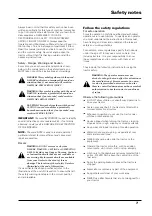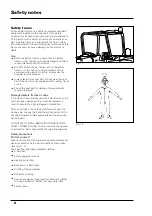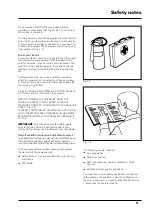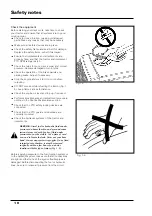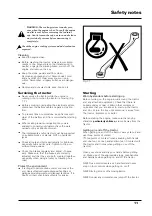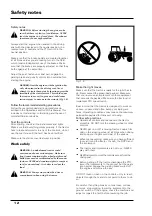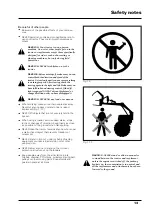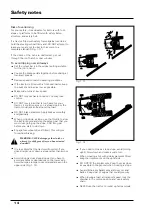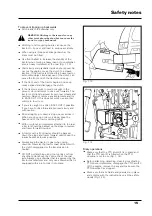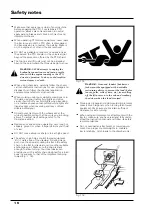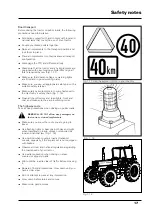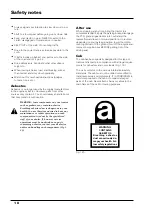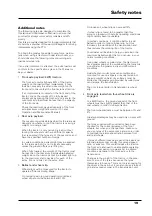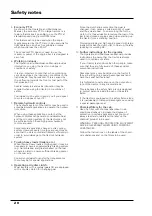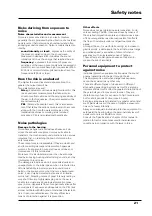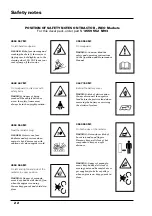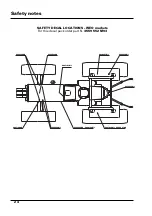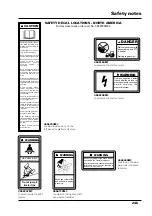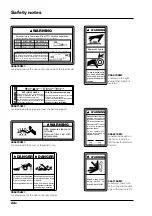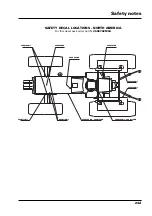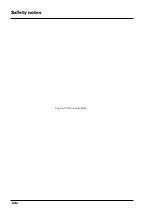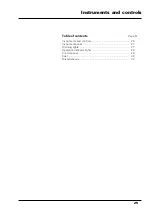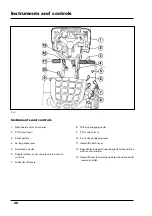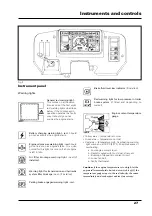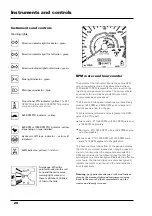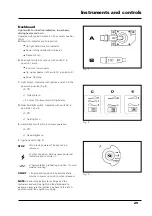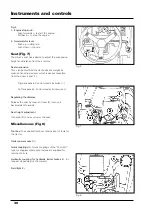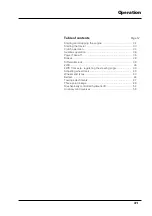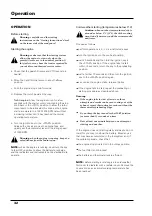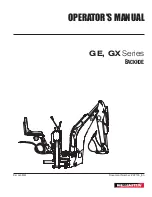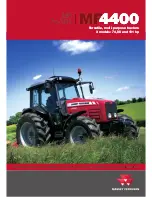
Risks deriving from exposure to
noise
Noise characteristics and measurement
Noise is a pressure variation in an elastic medium,
generally the air, produced by the vibration of a material
body (source) that determines an undesired and often
annoying acoustic sensation. Noise is mainly character-
ized by:
sound intensity or level:
expresses the entity of
the pressure variation due to the sound wave.
Measured in decibels (dB), it doubles the sound
intensity and, thus, the energy that reaches the ear.
frequency:
expresses the number of pressure
variations of the wave per second and is measured in
Herz (Hz) - acute noises have high frequencies (2000-
4000 Hz or more) while low-pitched noises have low
frequencies (250 Hz or less).
How the risk is evaluated
The higher the sound level and exposure time, the
greater the noise risk will be.
Two parameters are used:
LAeq
(Equivalent continuous weighted level A): this
is a sound level measurement that takes into ac-
count noise fluctuations and the varying sensitivity of
the ear to the frequencies: LAeq is measured with a
sound-level meter;
PEL
(Personal Exposure Level): this is a measure-
ment that takes the various noise levels into account
along with the time the worker remains on the
individual machines or working at determined
processes: PEL is calculated mathematically.
Noise pathologies
Damage to the hearing
Noise causes hypacusia or deafness because it de-
stroys the acoustic receptors, nervous cells able to
transform the mechanical sound vibrations into nervous
impulses that, on reaching the brain, determine the
aural sensation.
These receptors are irreplaceable if they are destroyed
and the resulting damage is irreversible: hypacusia
worsens if exposure to noise continues and does not
improve even if this terminates.
Moreover, it is also bilateral since it can be accompa-
nied by annoying buzzing and whistling sounds, and by
intolerance to loud noise.
The damage is insidious since it proceeds slowly and
unexpectedly: in the initial phase, when it is limited to a
diminished ability to perceive acute sounds (music,
bells) or the spoken voice when there is a background
noise, it can only be detected by means of an audio-
metric test. Pulsating noises of great intensity lasting a
very short time are highly damaging since the ear is
unable to actuate any physiological protective meas-
ures in time. Hypacusia from noise generally arises after
several years of exposure and depends on the PEL (risk
almost null below 80 dBA) and on individual characteris-
tics. It is an incurable disease: the only efficacious
means of protection against it is prevention.
Other effects
Noise does not just determine aural sensation. For le-
vels exceeding 70 dBA, it causes stress by means of
the cerebral integration centers and determines a spe-
cific neurovegetative reaction responsible for effects
that lead to cardiocirculatory and gastroenteric dis-
eases.
Amongst these, it is worthwhile noting: an increase in
gastric acidity, a decrease in the heart rate, visual range
and reflex speed; a sensation of discomfort and
weariness with an increased sense of fatigue.
These effects are dangerous because they also in-
crease the risk of accidents.
Personal equipment to protect
against noise
Individual protective equipment attenuates the sound
energy transmitted to the ear through the air.
This equipment is used when dangerous exposure
cannot be avoided in any other way.
There are different types of devices with different
attenuating capacities: helmets, ear muffs, ear plugs.
Helmets and ear muffs offer the greatest protection but
they are bulky and inconvenient to wear. They are
therefore only of use for exposure to high noise levels
but for short periods of time (max. 2 hours).
Ear plugs are generally tolerated to a greater extent and
are of particular use in the case of lengthy exposure to
noise of a lesser intensity.
Always use adequate individual protective equipment to
safeguard the hearing when the personal daily level of
exposure to noise is 85 dBA or more.
Consult the "Specifications" chapter of this manual in
relation to tractor noise measured in instantaneous
conditions in compliance with the laws in force.
Safety notes
21
Содержание 5860
Страница 28: ...Safety notes 24e Page left intentionally blank...
Страница 80: ...Maintenance 76 Page left intentionally blank...
Страница 88: ...Electrical system 84 Page left intentionally blank...
Страница 111: ...107 Table of contents Page N Technical specifications 108 Routine maintenance 109 Ground speed table 109 7860HC 8860 HC...
Страница 126: ...122 To ensure long and efficient service from your tractor use only spare parts and lubricants recommended by...
Страница 132: ...123 To ensure long and efficient service from your tractor use only spare parts and lubricants recommended by...

